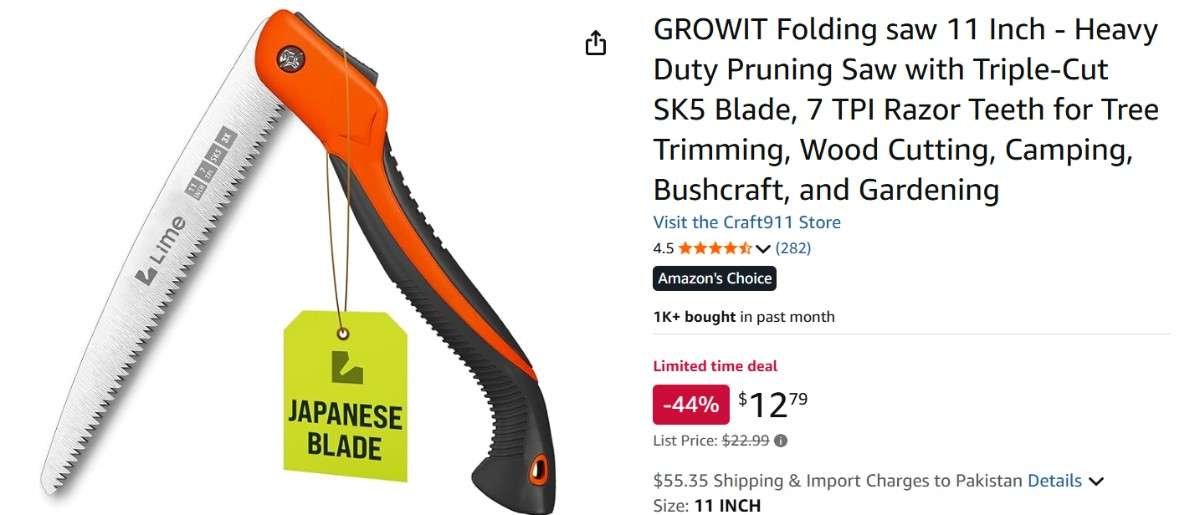Root pruning. It sounds a bit like plant surgery, doesn’t it? The truth is, it kind of is. Same logic but different biology. Root pruning is the act of cutting the roots off a plant to improve its health or control its growth. This is not just a random act of sniping underground. This is a deliberate move. It is a favourite among gardeners, fruit orchards, and bonsai lovers. When you get it right, the plants will respond almost magically. New feeder roots emerge, stronger and denser. And suddenly, your plant’s entire vibe changes. Healthier leaves. Better blooms. Balanced growth.
The Simple Logic Behind Root Pruning
Here’s the thing about roots: they’re always growing. Others spread out wide to search for nutrients, while some shoot deep into the ground. Roots can get thicker and woodier as they age. They are also less efficient at feeding the plants. Here is when root pruning comes into play. By trimming certain roots, you trigger the plant to produce fresh, active ones that absorb water and minerals better. It’s like telling your plant, “Hey, time to hit the reset button.” And plants listen. Root pruning isn’t just a horticulture trick — it’s science-backed. Controlled injury makes plants stronger. Nature’s strange, but that’s the beauty of it.
Why Gardeners Use Root Pruning
So, why take a shovel to perfectly fine roots? The reasons are plenty. First, root pruning controls a plant’s size without killing it. This is key in bonsai care or when space is limited. Second, it boosts plant health. New roots = more nutrient absorption. Third, it preps plants for transplanting. Without it, moving a tree could be a death sentence. And for orchard growers, root pruning encourages more flowers and fruit instead of endless leafy branches. The bottom line? It’s about control and vitality. You’re not hurting the plant for fun — you’re helping it adapt, survive, and thrive.
The Science at Play
When you cut roots, the plant doesn’t panic — it works. Damaged roots release signals that stimulate the growth of finer, fibrous roots closer to the trunk. These are the roots that do the heavy lifting for nutrient and water uptake. In some cases, root pruning even improves a plant’s drought tolerance. Why? Rainwater can be more readily accessed by the new roots, which are located closer to the soil’s surface. Plants also divert their energy from the top growth to recover roots. This results in an equilibrium between above- and underground structures. That’s plant biology working in harmony with a gardener’s hands.
When to Do Root Pruning
It is important to be on time. Is it a good thing to chop down a branch during a storm? Visit during the dormant period, which is usually from late autumn to early spring. The shock will be less severe because the plants are not actively growing. It is possible to do this for some species of tropical plants just before the rainy season. This will help them recover quicker. During peak growth, the plants can be stressed, and their development stunted or killed. Root pruning should be viewed as a deliberate stress and not an injury. Timing decides whether the plant thanks you or curses you.
Tools You Need
Root pruning doesn’t require a massive toolbox. The size of the roots will determine whether you need a sharp spade or pruning saw. For deep clean cuts, some gardeners prefer to use long-handled root pruners. The key is sharpness — dull tools crush roots, causing damage that invites disease. Gloves are a must because you’ll be dealing with soil and possibly stubborn roots. And if you’re doing root pruning for potted plants, a simple pair of clean pruning shears works wonders. Remember, cleanliness is as important as sharpness — dirty tools can spread soil-borne diseases faster than you think.
How to Root Prune Step-by-Step
The procedure varies depending on whether you are working with plants or trees that have been planted in soil. Start by drawing a circle around the root boundaries of the in-ground plant. Dig down to the line you marked, cutting cleanly through all roots. Keep healthy roots intact and remove large damaged ones. Remove the potted plant gently, remove excess soil and trim away any circling or tangled roots. Always replant in fresh soil. And water deeply after the process — hydration helps the plant recover faster. Root pruning is part surgery, part art, and part patience.
Root Pruning for Bonsai
Bonsai growers are obsessed with root pruning. Why? Because it’s essential for keeping trees miniature while still healthy. Bonsai root pruning is usually done during repotting, trimming away thick, old roots and encouraging fine feeder roots that fit into shallow pots. Without this, bonsai trees either become pot-bound or lose vigour. The art here is knowing how much to remove — too much, and you stress the tree beyond recovery; too little, and it keeps growing like a regular tree. Bonsai root pruning is delicate work, almost like sculpting. And every snip has a purpose, shaping not just roots, but the entire tree’s life.
Transplanting and Root Pruning – The Perfect Duo
If you’ve ever moved a tree and watched it wither, you know transplant shock is real. Root pruning reduces that risk. By pruning roots a season or two before transplanting, you help the plant develop compact root systems close to the trunk. When you dig it up later, you get most of those roots intact, making relocation smoother. This is especially important for mature trees. Without it, the long, spread-out roots get cut haphazardly during digging, leaving the plant vulnerable. With root pruning, you’re training the plant to move house without losing too much of its underground foundation.
Mistakes to Avoid in Root Pruning
Root pruning may sound simple, but it’s easy to overdo it. Removing too many roots at once can starve the plant, leading to wilting or death. Cutting during the wrong season is another big mistake — it messes with the plant’s growth cycle. Using dirty or dull tools increases infection risks. And perhaps the most common error? Forgetting to water afterwards. A freshly pruned plant needs consistent moisture to recover. Also, never fertilise immediately after root pruning — the plant is in repair mode, not growth mode. Think of it like post-surgery care: gentle handling, not an intense workout.
Root Pruning and Container Gardening
Root pruning may be the answer if your potted plants suddenly stopped growing or started to look tired. Roots grown in pots often grow dense mats that can’t absorb nutrients. In containers, root pruning involves cutting out the circling roots of plants and giving them more room or new soil. You can refresh your plants’ life by pressing the button. This can prolong the life of perennial container plants by years. They will become rootbound and eventually decline. So yes, even that patio ficus or balcony lemon tree might be silently begging for a little root pruning love.
Benefits You’ll Notice
After root pruning, you’ll often see signs of recovery within weeks. Leaves get greener. Growth becomes more compact and balanced. Flowering plants produce more blooms. Fruit trees direct energy towards fruit rather than excessive growth of leaves. Moisture retention in the soil has also been improved as the roots are now growing closer to the surface of the soil. The plant’s roots will grow stronger over time. The plant can better resist insects, diseases and droughts. One of the best gardening methods is to use it over and over. You don’t just fix a problem — you set the plant up for years of success.
Final Thoughts on Root Pruning
The root pruning technique isn’t the latest gardening trick. This is an ancient, tested method that combines science with intuition. This method works for training bonsai, managing an orchard’s productivity, saving houseplants that are rooted or preparing trees to be planted. The key is balance: how and when to remove material from the plant, as well as what you should do afterwards. If done properly, root trimming can be compared to a spa-like treatment for plants. You can cause a disaster if you make a mistake. It is important to approach it with humility and use sharp tools. Your roots will reward you with health, beauty and growth.



